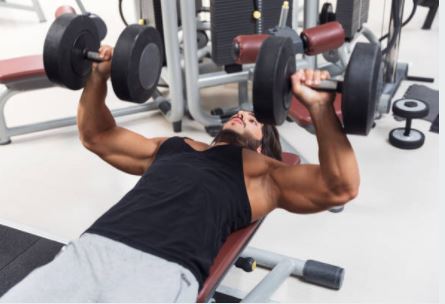The dumbbell shoulder fly is a compound exercise that targets the muscles in the shoulders as well as your arms and back. It is a popular exercise among fitness enthusiasts and weightlifters for its ability to strengthen and tone the upper body.
The dumbbell shoulder fly can be easily done in your home or at the gym just with the help of dumbbells. You can also do it with a cable machine but dumbbells are more effective for this exercise.
The movement in the shoulder flies is quite easy as you will hold the dumbbells in your hands and raise your arm one by one to the sides bringing the dumbbells at shoulder height.
Just remember, you need to pick the right weight whenever you perform this exercise as completing reps is more effective. While picking up heavy weight, more than can easily lift will put stress on your joints or injuries as well.

This exercise can help you build wider and thicker shoulders, which can make it easier to fit into T-shirts. This is why this exercise is a favorite among many fitness enthusiasts.
As a trainer, I will recommend you to start with light weight for any exercise as it will help your body to prepare for heavier weight afterward.
The Shoulder Muscles
Shoulder exercises are mostly used for targeting the deltoid muscle which is a superficial muscle. The deltoid muscle is prominent in your shoulder and its role is important in the movement of your shoulder and its stability.
The glenohumeral joint is covered by a sizable triangular-shaped muscle, which gives the shoulder its rounded appearance. The anterior or clavicular part, the middle or acromial section, and the posterior or spinal part are the three separate parts of the deltoid muscle.

The deltoid muscle’s main job is to move the shoulder joint and the humerus (upper arm bone) together. It makes a variety of muscle motions, such as:
- Abduction: Lifting your arm outward to the side of your body.
- Flexion: Lifting your arm anywhere from the side to over your head.
- Extension: Moving your arm behind you.
The thoracoacromial, circumflex, and deep brachial arteries are only a few of the axillary artery’s many branches that give blood to the deltoid muscle. The axillary nerve, which leaves the axilla and travels around the neck of the humerus, innervates it.
The deltoid muscle’s architecture and function must be understood to move and stabilise the shoulder correctly and to avoid injuries. Exercises that strengthen and develop the deltoid muscle help preserve shoulder health and increase upper body strength.
The Shoulder Fly & Different Exercises
We have discussed a little about some benefits and muscles the shoulder fly exercise targets, but what is a shoulder fly?
The shoulder fly, also called shoulder raise is an exercise that is ideal for building strength in the shoulder muscles to be specific. If you want an aesthetic, thick and wider shoulders then you should include shoulder fly into your upper body strength exercises.

Some people call the shoulder fly a Dumbbell lateral raises or Dumbbell side raises as well because it particularly targets your deltoids as you lift the dumbbells in each arm to the sides of your body.
This exercise targets your deltoids, which can help you train your lateral, anterior, and posterior deltoid. For that reason, you will have to do this exercise in different ways such as a front fly, lateral fly, or reverse delt fly.
1. Front fly
The Front fly is also called a front raise because you have to raise the arms on the front of your body. This exercise targets the anterior deltoids and also works your pectorals(upper chest).
2. Lateral fly
The lateral fly, also called a side fly or raise is also an effective exercise for your shoulder strength which primarily targets the lateral head of the deltoid muscle for a rounded shoulder. You’ll also somewhat engage your front deltoids and upper traps due to the rotating motion.
3. Reverse fly
The reverse fly, also called the rear delt raise targets the rear deltoid muscle or posterior head of the deltoid for more broad shoulders. Posterior deltoids are the necessary muscles for balancing and reverse flys are best for building your posterior deltoids.

Now, for performing the dumbbell shoulder fly, you can divide it into three different exercises or you can say three different ways for the three muscle groups of your shoulder. Let’s discuss these three exercises now:
1. Front Fly/Raises
The front fly, also called front raises, is the variation of dumbbell shoulder fly which primarily targets the anterior (front) deltoids, but also engages the muscles in your shoulders and upper body. You should always start with light weight and gradually increase with time to avoid any sort of stress or injuries.
The primary muscle this exercise targets is the anterior deltoid while the secondary muscles are the lateral deltoid, posterior deltoid, trapezius, and supraspinatus.

How to do it?
Here are the steps to perform the Dumbbell Front Raise:
- Stand with your feet shoulder-width apart, holding a dumbbell in each hand with an overhand grip (palms facing your body).
- Keep your back straight and your core engaged throughout the exercise.
- Extend your arms straight in front of you, ensuring your elbows are slightly bent.
- Lift the dumbbells upward in front of your body until they reach shoulder level while keeping your arms straight.
- Pause for a brief moment at the top of the movement, focusing on squeezing your shoulders.
- Slowly lower the dumbbells back to the starting position in a controlled manner.
- Repeat the exercise for the desired number of repetitions.
Important points to remember:
- Do not swing or lift the dumbbells with momentum. Every movement should be under control.
- Avoid excessive wrist bending or extension by maintaining a tight grip.
- To maintain stability and avoid excessive back arching, contract your core muscles.
- Pick the weight that you can easily lift while completing the reps.
You can aim to perform 3 or 4 sets of 10 or 12 reps for proper front shoulder strength and growth.
2. Dumbbell Lateral Fly
Another amazing variation of the dumbbell shoulder fly is the dumbbell lateral fly also called lateral raises. This exercise will target the muscles on the side of your shoulders which are called the lateral deltoids.
For aesthetic wide-shoulders, this exercise is one of the best as it targets the side of your shoulders, to develop strength and growth in that area.

This exercise primarily targets your lateral deltoid, with secondary muscles such as the anterior deltoid, posterior deltoid, trapezius, and supraspinatus as well.
How to do it?
Here are the steps to perform the Dumbbell Lateral Fly:
- Stand straight with a little distance between your shoulder and feet and hold a dumbbell in each hand with your palms facing each other.
- Keep your back straight and your core engaged throughout the exercise.
- Extend your arms straight down to your sides, ensuring your elbows are slightly bent.
- Lift the dumbbells upward and outward in a sweeping motion, ensuring your arms remain parallel to the ground.
- Pause for a brief moment at the top of the movement, focusing on squeezing your shoulders.
- Slowly lower the dumbbells back to the starting position in a controlled manner.
- Repeat the exercise for the desired number of repetitions.
Important points to remember:
- Your movement should be under control without any swing in your motion.
- Maintain stability in your posture with no excessive arching in your back.
- Begin by performing the reps with weights that are simple for you to lift, and then progressively increase.
The dumbbell lateral fly exercise is typically performed in 3–4 sets of 8–12 repetitions for strength and muscle development. This rep range encourages muscular development and growth while properly targeting the muscles.
However, you might choose higher repetitions, such as 12–15 repetitions each set, if your objective is muscular endurance or toning. This might increase stamina and make your muscles look toned.

3. Standing Dumbbell Rear Delt Fly
Standing Dumbbell Rear Delt Fly, also called bent-over dumbbell reverse fly is an exercise that is used to target the posterior deltoids including the upper back muscles and the lateral deltoid. This exercise will help you in making your shoulders more broader.
This exercise will lead to better posture and greater strength than some other exercises. Thus, I would personally recommend you include this exercise in your fitness routine.
The main muscle this exercise targets is the posterior deltoid while the secondary muscles are the lateral deltoid, trapezius, rhomboids, and infraspinatus.

How to do it?
Here are the steps to perform the Standing Dumbbell Rear Delt Fly:
- Holding a dumbbell in each hand, bending your knees just a bit, and hunching forward at the hips while keeping your back straight and your abs tight.
- Your upper body should be parallel to the ground, similar to how you would sit at a table.
- Start with hanging your arms down at your sides, palms up.
- Sweeping your arms out to the side while keeping your elbows slightly bent. Lift your arms as high as your shoulders, if possible.
- At the top of the exercise, squeeze your shoulder blades together to make sure your rear deltoids are the main muscle group used.
- Without allowing your shoulders to curve forward, pause for a brief second and then gradually lower the dumbbells back to the beginning position.
- Repeat the exercise for the desired number of repetitions.
Important points to remember:
- Avoid using momentum to swing the weights up or arch your back excessively. Keep your movements controlled and focus on isolating the rear deltoid muscles.
- Engage your core muscles to maintain stability and support your lower back.
- Keep in mind that your arms should always be parallel to your shoulders.
The number of sets and repetitions you accomplish for this exercise will depend on your fitness objectives, but a typical method is to complete 2-3 sets of 8–12 repetitions. To challenge yourself within your ideal rep range, pick weights that are heavy enough.
4. Head-Supported Rear Dumbbell Fly
The other name for the head-supported rear dumbbell fly is the head-supported bent-over dumbbell lateral raise.
This reverse dumbbell fly primarily targets your posterior deltoids, by keeping a horizontal torso. If you have an upright torso, you will target your lateral deltoid more than your posterior deltoid. That is why it is recommended to keep a horizontal torso.
The secondary muscles worked by this exercise are the lateral deltoid, trapezius, rhomboids, infraspinatus, teres minor, and teres major.

How to do it?
Here are the steps to perform the Head-Supported Rear Dumbbell Fly:
- Start by lying face down on an incline bench with your chest supported and the head hanging off the end of the bench.
- Hold a dumbbell in each hand with palms facing each other and extend your arms toward the floor.
- Squeeze your shoulder blades together and lift your arms laterally until they are in line with your shoulders or slightly higher, maintaining a slight bend in your elbows.
- Pause for a brief moment at the top of the movement, then lower the dumbbells back down toward the floor, keeping them under control.
- Repeat the exercise for the desired number of repetitions.
Important points to remember:
- Keep your neck relaxed and supported on the bench throughout the exercise.
- Focus on using your rear delts to lift the weights, avoiding the use of momentum.
- Keep your wrists firm and avoid excessive bending or extending of the wrists.
- Engage your core muscles to maintain stability and support your lower back.
- Start with lighter weights and gradually increase as you build strength and proper form.
If increasing muscle size and strength is your major objective, you can choose to do 3–4 sets of 8–10 repetitions with a weight that pushes you yet allows you to maintain perfect technique.
You may use higher repetitions and lighter weights if your goal is more muscular endurance or toning. In this situation, performing 3–4 sets of 12–15 repetitions can be useful.
You might also like to read :
- 11 Most Effective Tricep Pushdown Alternative
- 10 Dumbbell Lat Exercises for a Stronger and Sexier Back
- The Ultimate Guide to Cross Body Hammer Curls for Bigger Arms
Best Alternatives of Dumbbell Shoulder Fly
1. Rear Delt Fly Machine
The machine fly or the rear delt fly machine is one of the best alternatives to the dumbbell shoulder fly that targets your rear deltoids. This exercise is one of the safest ways to target your rear delts.
The primary muscles worked by this exercise are the rear delts while the secondary muscles worked are the traps, rhomboids, and a few other muscles in your upper back.
The benefits of this exercise include stronger shoulders, reduced risk of injuries, and improved posture. You can watch this video here for a proper demonstration of this exercise.
2. Cable Shoulder Fly
The Cable shoulder Fly is one of the variations of the dumbbell shoulder fly through which you can perform many other variations approximately above 10. This exercise is used to build the shoulder muscles.
Presses and front raises are included in these cable shoulder exercises to target developing your anterior deltoids.
The benefits of this exercise include the ability to execute multiple exercises with a single piece of equipment, constant tension across the range of motion, rapid shoulder training, and safety over free weights. For a better demonstration of this exercise, look at this video on YouTube.
3. Plate Shoulder Fly
The plate shoulder fly is an isolated upper-body exercise, which primarily targets the anterior head of the deltoid muscle group. This exercise gives you an option of either doing it while standing or on a seat but always try to start with a light weight and gradually increase.
For targeting your shoulders’ fronts and sides, you might also try performing plate front raises with rotation.
You may also like to read :
- 10 Best Low Back Dumbbell Exercises
- How Much Does A Dumbbell Bar Weigh?
- Dumbbell Hex Press: The Secret to Maximize Your Chest Gains
FAQs
How many reps for shoulder flies?
Whether you want to gain strength or grow muscle, your unique goals will determine how many reps you should perform during an exercise. The ideal rep range for muscular building is between 6 and 15 for each set. Three to eight repetitions are suggested each set for strength.
Do flies help posture?
Exercises for scapular retraction may help you develop shoulder strength and improve posture. A few times each week, try doing chest dumbbell flies to help with shoulder retraction and to open up the chest and shoulder area.
How effective is a reverse fly?
The reverse fly exercise enhances functional fitness and promotes good posture. An upright stance supports a healthy spine and lower back and boosts self-confidence.
Should I do shoulder flys sitting or standing?
Standing shoulder presses are recommended for functional strength in sports like CrossFit, powerlifting, weightlifting, or Strongman. On the other hand, seated shoulder presses are superior for developing hypertrophy and are a better option for people with less developed core muscles.
Conclusion
The best thing about this exercise is that it has different variations which target the different muscle groups individually. This helps in developing the strength, size, and functional proficiency of your shoulders.
This exercise is very helpful in improving your shoulder stability, enhancing your posture, and achieving aesthetic shoulders.
You should keep one thing in mind and that is to always start with lighter weights, maintain a proper torso and gradually increase the workout intensity while performing this exercise.
If you want aesthetically pleasing shoulders, the exercises mentioned above are the ones that will help you achieve those broad, wide, and rounded shoulders of your dream.

